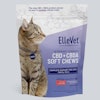
The Association of American Feed Control Officials (AAFCO) is devoting considerable resources into "modernizing" how pet food labels will appear in the future. These efforts will dramatically affect several aspects of labeling, particularly how nutrient content and nutritional adequacy information must be conveyed to the purchaser. Safe handling graphics will also become a necessary component of labels in the future. However, notwithstanding the years of work so far, full implementation of these amendments still may be years away. In the interim, manufacturers should focus on more imminent regulatory changes.
Product names
At the AAFCO "mid-year" meeting in January 2020 in Albuquerque, New Mexico, USA, the full membership voted to agree to the deletion of Regulation PF3(e) from the Model Regulations for Pet Food and Specialty Pet Food. Frankly, this was an old "catch-all" regulation that outlived its usefulness. In fact, during deliberation no one could even provide a good example of where it would be applicable under today's rules. So, its absence will be inconsequential.
Of greater effect on labeling are the proposed amendments to other naming regulations. As accepted by the Model Bills and Regulations Committee, the most impactful change is use of the term "100%" (and equivalent terms, such as "all") in the brand or product name. The current regulation provides for a number of exclusions, including water for processing and "condiments." Assuming that the full membership will vote to approve this amendment at the annual meeting, names such as "100% ___" will apply to single-ingredient products only. In other words, if there is anything in the product other than the named ingredient, even small amounts of a flavor or processing aid, use of the term is not allowed.
The other changes to that section clarify that where multiple ingredients appear in a brand or product name (or elsewhere on the label), they must be listed in order of predominance by weight. The only exception is for flavors. This is because flavor sources may vary in intensity (e.g., use of a whole herb versus a concentrated extract), so their order of predominance may not be accurately reflective of their contribution to the flavor profile.
Ingredient percentage claims
For years, some feed control officials took issue with how percentages of ingredients were represented on the label. For example, cans of products claiming "85% beef" could be misleading if a large proportion of that product (such as water or broth) was intentionally excluded from the percentage calculation. The new regulation as accepted by the Model Bills and Regulations Committee now specifies that a percentage claim must be based on the total weight of all ingredients.
So, for example, in a product containing 45% beef, 40% broth and 15% other ingredients, the only viable options would be "45% beef" or "85% beef and broth." There is a deviation allowed only in the case of water for processing, but with an important caveat: If 40% added water is excluded from the total weight, that changes the percentage of beef from 45% (45/100) to 75% (45/60). Hence, a "75% beef" claim would be an option, but importantly, only if a disclaimer such as "exclusive of water" appears in association with, the same color and style as, and at least half the height of the claim itself.
Feeding trial protocols
Several years ago, the AAFCO Dog Food Nutrient Profiles were updated. An important component of that was a more restrictive cap on the concentration of calcium (from 2.5% Ca DM to 1.8%) in foods that were intended to be fed to large size puppies; i.e., any dog whose adult weight was expected to exceed 70 lb. However, a corresponding change to the AAFCO feeding trial protocols was not made.
Normally, a food that passes a feeding trial is exempt from any requirement to meet the Profiles. So, as it stands now, a diet that passes a growth feeding trial using smaller dogs could be labeled to be fed to all puppies regardless of size. An obvious remedy would be to require diets intended to be fed to large-size puppies to be feeding trial tested in large-size puppies. Unfortunately, the paucity of suitable colonies of appropriately larger dogs makes that infeasible on a large scale.
With the full membership's approval of the revised regulations (anticipated to occur at the next annual meeting), companies will be given options. In order to make a "growth" or "all life stages" claim without restriction on body weight, a trial can be done using a large breed. Alternatively, if the trials are conducted using a smaller-sized dog colony it is still feasible to make a claim to include growth of large-size dogs, provided that the diet also meets the calcium and phosphorus maximums as dictated by the Profiles for these size dogs.
Briefly: Top 5 takeaways
- Full implementation of AAFCO’s labeling modernization amendments still may be years away.
- Assuming that the full membership votes to approve the amendment at the upcoming annual meeting, names such as "100% ___" will apply to single-ingredient products only.
- According to a new regulation, a percentage claim must now be based on the total weight of all ingredients.
- If trials are conducted using a smaller-sized dog colony, it will be feasible to make a claim to include growth of large-size dogs, provided that the diet also meets the calcium and phosphorus maximums as dictated by the Profiles for these size dogs.
- For more on AAFCO’s latest decisions: www.PetfoodIndustry.com/articles/8568


















